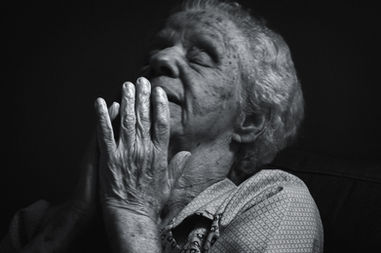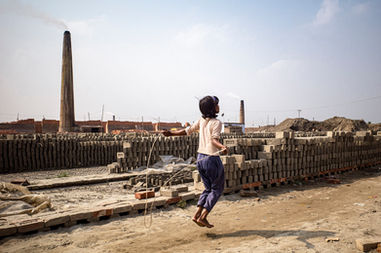
THE INVISIBLE WORKERS
May 28, 2020
PICTORIAL STORY
Photography by Adrian Whear
Story by Melanie Meggs
From the crowded streets of Dhaka to the open-air kilns of its richly traditional brick factories, Adrian Whear's experience of Bangladesh was a journey into a world of culture and tradition unlike anything he had ever seen before. As a street photographer based in Melbourne, Adrian eagerly embraced the opportunity to travel to Bangladesh and photograph alongside the members of the Bangladesh Photographic Society. From his encounters with the friendly people of Bangladesh to witnessing their hard-working lives, Adrian's photos speak volumes about the hidden stories of this often-overlooked country. Through his pictures, Adrian beautifully captures the warmth and generosity of the Bengali people, while also highlighting the harsh realities of their struggle for survival in a rapidly expanding urban environment. Join Adrian on his incredible journey as he discovers the unique beauty of Bangladesh and its resilient people.
-min.jpg)
“I would describe my travel experience to Bangladesh as real-world time travel. The Bengali people are economically poor, but so rich and generous in spirit and soul. I felt so connected to them that I wanted my photography to represent them all fairly and honestly. Their stories are mostly hidden from the majority of the Western world, and it is important for all of us to remember that all people are equal and deserve to be treated respectfully. I hope I have achieved this with my photography.”
The first couple of days in Bangladesh were spent with Adrian trying to shoot his usual street style in the old part of Dhaka. “Everywhere I went, I would attract attention, people would follow me, and many curious eyes would stare at me. This made it near impossible for me to capture any candid street scenes. I posed for many photos, and I believe that there must be many images of me out there on Facebook in Bangladesh,” says Adrian.
Bangladesh is a country with a rapidly growing population of over 160 million people. In the metro area of Dhaka alone there are over 21 million, which has resulted in a rapid urban expansion. This in turn has led to a high demand for cheap building materials, which has led to a thriving brick making industry. The land around Dhaka is full of high chimneys, spewing out thick smoke from the millions of bricks being burnt.
The World Bank estimates that the industry here employs over one million people who churn out approximately 23 million bricks every year. These bricks are produced using an old method of mixing soil with water, which is then formed into bricks using wooden frames, then left to dry in the sun before being fired in traditional coal burning outdoor kilns. This process is almost entirely done by hand. Male and female workers of all ages travel from all over Bangladesh to get a job in these factories, where they earn between 300-800 Taka (US$3.50-$9.50) a day. For the poor, life is unimaginably hard in Bangladesh.
Adrian remembers seeing the brick factories for the first time. “I was overwhelmed by the sheer scale of the factories; they were so large in area. I had not imagined them to be so vast. As far as my eyes could see there were bricks and chimneys. The landscape was flat, everything was at ground level except for the large number of chimneys reaching for the sky, spewing out grey smoke. What I immediately noticed was the dust, just so much dust in the air. Initially I did not see many people as they were working down in the open kilns. The first people I saw were the children, who were drawn to the Westerner arriving, whilst their parents were occupied and working.”
Adrian virtually had unlimited access to anywhere within the workplace as long as he didn't get in the way. Occupational health and safety are non-existent. The workers are paid by the load, so they really cannot stop to pose for a photograph or stop to talk. Any interruptions to their work could potentially cost them some wages. Adrian prefers to photograph disengaged, as it allows him to enter a mindset where he is fully focused on the environment. He wants to capture the natural essence of the scene. But there were many times when he moved between being disengaged and engaged in Bangladesh, like times when someone would reach out to him. At such times he always tried to respond, whether that was just a knowing glance, a nod of the head or a passing word such as “Hello” or “Where are you from?”.
“We would occasionally make eye contact for a short moment to connect, where you would just see and feel their humanity. A couple of workers asked me for some of my water, which I absolutely happily obliged. At the end of the day, it was time to relax. The older men would drink milk tea and smoke, the younger men would start up a game of cricket or soccer, the girls would start a skipping game, and the older women would gather together, talk and watch,” he explains.
Seeing all this made Adrian put the camera down to connect with the Bengali people as much as he could, drinking milk tea, complete with six sugars and joining in and talking with the men. English is widely spoken. He joined in nightly games of cricket, and as soon as word got around, more people showed up to join in. “I soon became a combination of Ricky Ponting, Shane Warne and Adam Gilchrist! With the young girls I would skip rope and teach them clapping games. I'm sure I missed out on many great photographic opportunities, but I have memories that are priceless from these evenings.”
Adrian was often captivated by the vibrant colours of the textiles worn by the women in total contrast to the bland background and brutal reality of the scene. In the West we are conditioned in many ways to still see this type of work as being 'mans' work, so the sheer brutality of this type of manual labor becomes even more obvious when you see the women and children also being exploited.
Women workers suffer from a lack of secured employment, low and discriminating wages, and exploitative working conditions. Their way of life is perpetually in a state of continuous change. The women comprise about half of the total workforce of every brick factory. They generally are the wives of the male factory workers and usually take up the employment to improve the standard of living for their families rather than to achieve any independent status for themselves.
The children cannot be left home alone and usually the older children will help the parents out in whatever ways they can. Although school is compulsory, parents often do not send their children, because out of the necessity for another meager wage to help support the family. Most of the girls in the age group 10-16 work alongside their mothers and the boys in the age group 10-17 work mostly in the loading and unloading from the truck. According to the United Nations Human Development Index 2019, Bangladesh ranks in place 135 of 189 countries for which report data exist. The mean years of schooling are 6.1. By comparison, Australia ranks in place 6 and has 12.7 mean years of schooling. Singapore ranks in place 9, with 11.5 mean years of schooling.
“For me, it was very emotional to see the young girls carrying out this type of manual labor. At that time of travelling to Bangladesh, my daughter in Melbourne was 17, so I would often compare her life to her counterparts in Bangladesh,” says Adrian.

Whilst this story focuses mostly on Adrian's experience visiting the brick factories in Bangladesh, he also visited one in Kathmandu, Nepal. There are also thousands of brick factories located in India and Pakistan, all with very similar stories. Children everywhere, no safety equipment, illness, withheld wages, pregnant women, and no clean water. Workers are treated like slaves, and it has been going on for many decades.
It is time for governments to take responsibility and end this exploitation that rightly should not be happening in the 21st century.

The views, thoughts, and opinions expressed in the text belong solely to the author/s, and are not necessarily shared by The Pictorial List and the team.










































